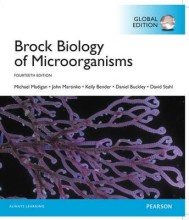Genetics of bacteria and archea - Gene transfer in Bacteria - genetic recombination
12 important questions on Genetics of bacteria and archea - Gene transfer in Bacteria - genetic recombination
What are the steps involved in the transposable genetic element process?
- Excision: The element cuts itself out of its original genome location.
- Movement: It relocates within the genome.
- Integration: It inserts itself into a new location.
What are the main steps in the insertion sequence, transposons process?
- Duplication: It can duplicate itself during transposition.
- Disruption: Insertion into a gene's coding region can disrupt its function.
What are the key processes involved in DNA as the genetic material?
- Transcription: DNA to messenger RNA conversion.
- Translation: Messenger RNA to protein translation.
- Recombination: DNA strands break and recombine for genetic diversity.
- Higher grades + faster learning
- Never study anything twice
- 100% sure, 100% understanding
Could you outline the steps in the process of transduction, including generalized and specialized transduction?
- Replication: Viral genetic material replicates using host machinery.
- Packaging: Encapsidating bacterial DNA fragments for transduction.
- Release: New viral particles containing bacterial DNA are released.
What are the stages of conjugation, specifically involving F plasmid and HFr cells?
- Contact: Making contact with the recipient cell via the sex pilus.
- DNA transfer: F plasmid replication and strand transfer.
- Integration (HFr): F plasmid integration into the chromosome for gene transfer.
What is the primary function of transposable genetic elements in the genome?
- Excision: Cutting themselves out from the genome.
- Movement: Relocating within the genome.
- Integration: Inserting into new locations.
Can you explain how transposons contribute to genetic diversity and mutation?
- Duplication: Self-duplication during transposition.
- Disruption: Inserting into coding regions causes gene dysfunction.
What are the steps involved in gene mapping?
- Offspring are analyzed for phenotypic traits related to specific genes.
- Recombination frequency is determined by analyzing the proportion of recombinant offspring.
- Based on recombination frequency, the relative positions of genes on a chromosome are determined.
What is the process of protoplast fusion?
- Protoplasts from different organisms are fused using chemicals or electric fields.
- Fused protoplasts are cultured to promote cell division and growth.
- Cells with desired traits are selected and propagated.
What are the key steps involved in gene cloning?
- The gene is inserted into a cloning vector, such as a plasmid or viral vector.
- The vector carrying the gene is introduced into a host cell, often a bacterium or yeast.
- Host cells containing the recombinant vector are selected based on selectable markers, such as antibiotic resistance.
- Selected cells are cultured to amplify the cloned gene.
What are the stages in genetic engineering?
- Techniques like CRISPR-Cas9 are used for precise gene editing.
- The edited DNA sequence is introduced into the target organism using vectors or other delivery methods.
- The edited DNA integrates into the organism's genome for expression and inheritance.
- Modified organisms are screened for desired traits resulting from genetic modification.
What are the key steps involved in gene mapping?
- Offspring are analyzed for phenotypic traits associated with specific genes.
- The frequency of recombination between genes is determined by analyzing the proportion of recombinant offspring.
- Based on recombination frequency, the relative positions of genes on a chromosome are determined.
The question on the page originate from the summary of the following study material:
- A unique study and practice tool
- Never study anything twice again
- Get the grades you hope for
- 100% sure, 100% understanding
































